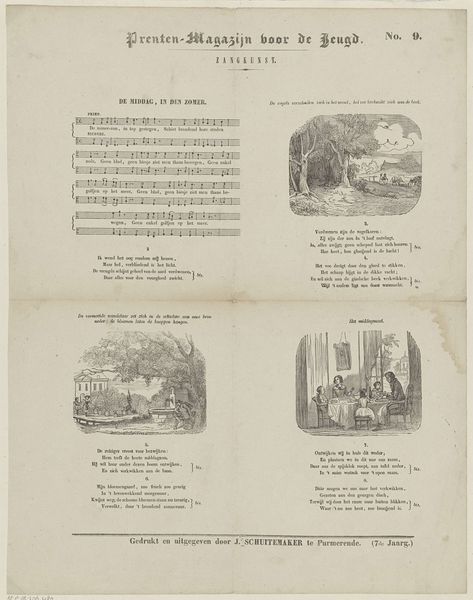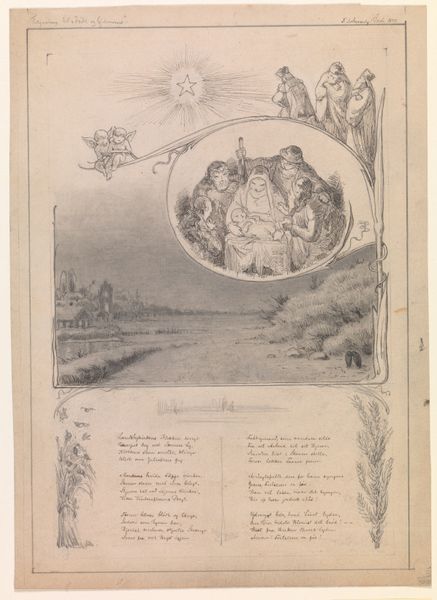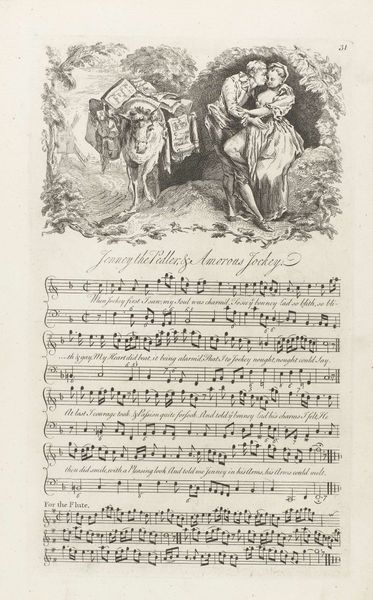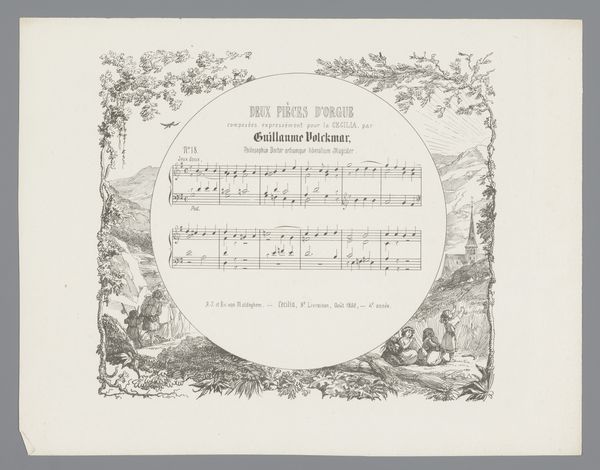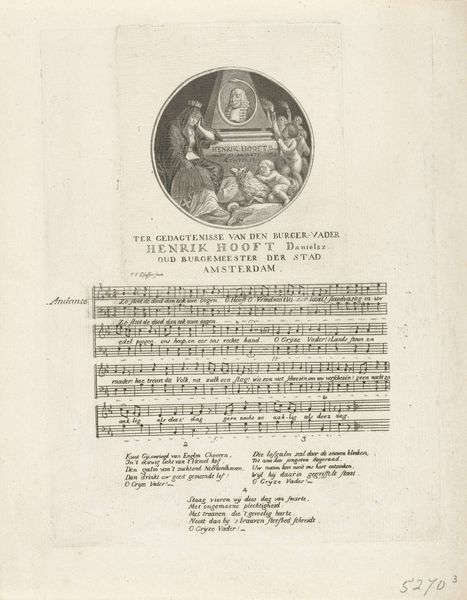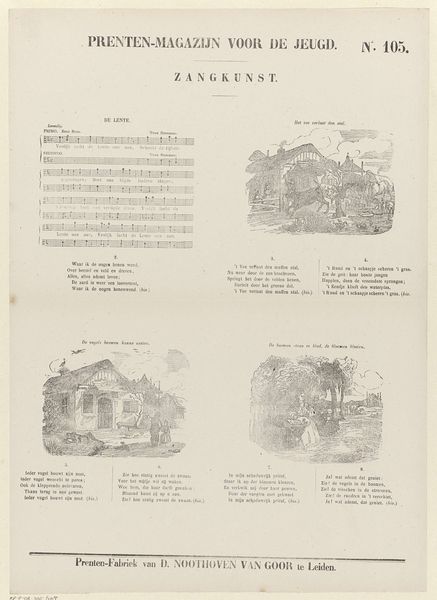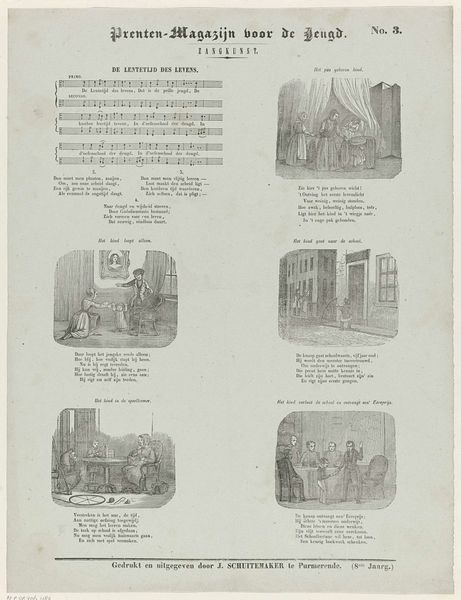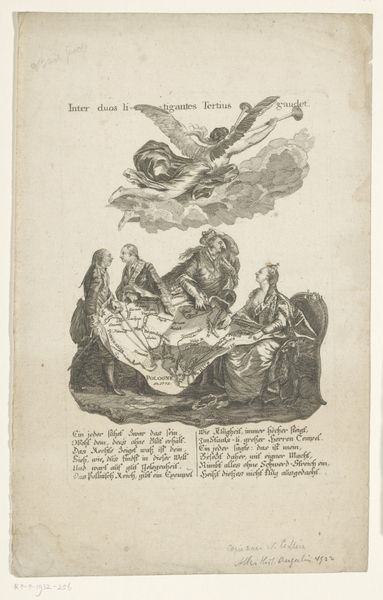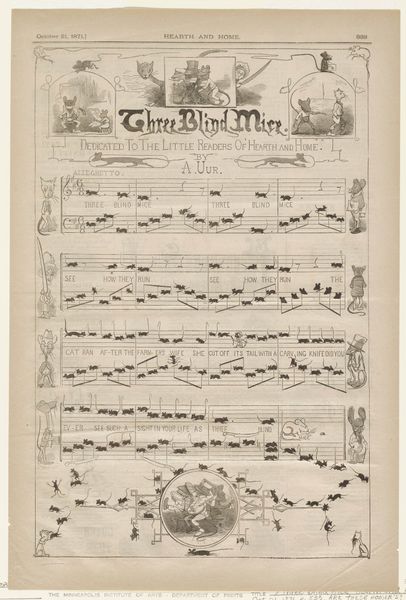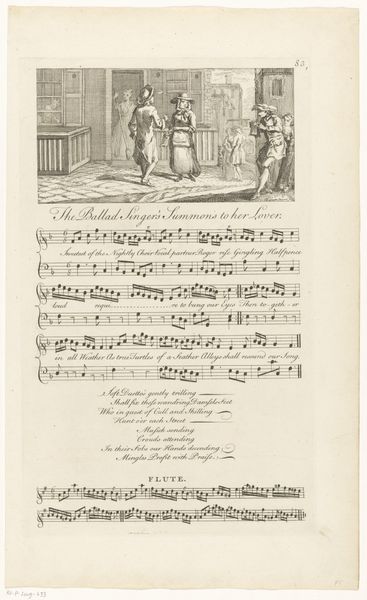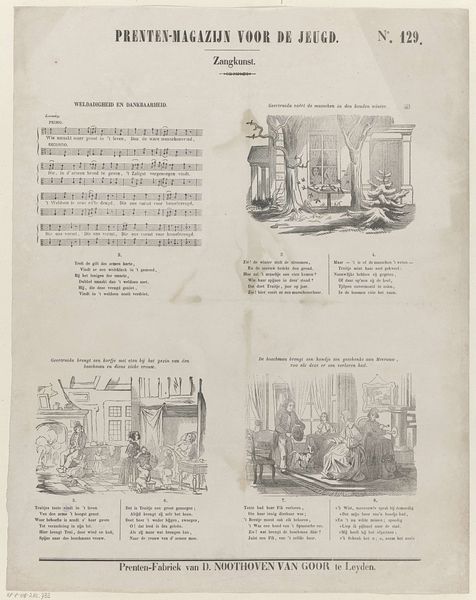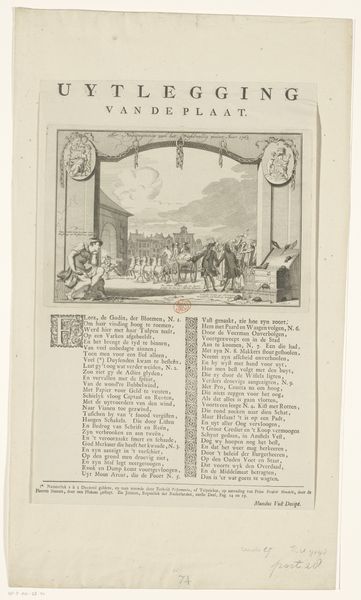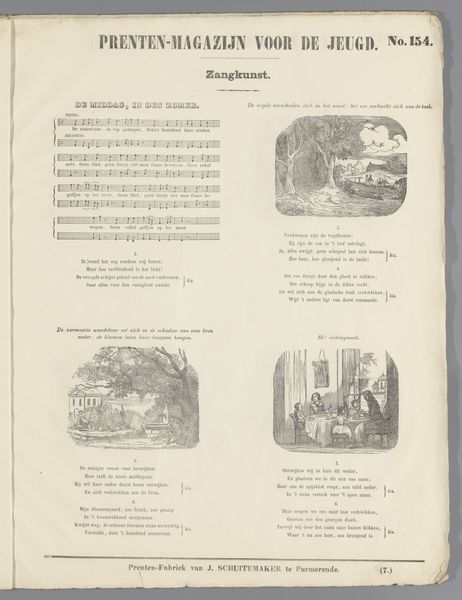
Harper's Weekly: A Journal of Civilization, Volume VII For the Year 1863 1863
0:00
0:00
drawing, graphic-art, print, paper
#
drawing
#
graphic-art
# print
#
book
#
paper
#
united-states
#
history-painting
Dimensions: 398 × 287 × 60 mm
Copyright: Public Domain
Curator: Well, isn't this evocative? What you're looking at is a page from "Harper's Weekly: A Journal of Civilization," specifically Volume VII from 1863. Published by Harper and Brothers, this print drawing is part of the Art Institute of Chicago's collection. Editor: My first thought is how dreamlike it is. It's busy, but the monochrome and flowing lines create a calming effect that doesn't seem to fit with, well, a Civil War-era news magazine. The ethereal beings and, what is it, sheet music, give it this angelic quality. Curator: Yes, exactly! That juxtaposition is key. The visual of angels and song connects to "The President's Hymn" depicted in the center, offering praise and hope amidst the ongoing conflict. Editor: Angels... it's a bold move. The image taps into a deep well of symbolic associations – purity, divine intervention, hope in the face of despair. Their presence gives a sense of celestial endorsement, aligning the Union cause with moral righteousness. But then, seeing images depicting formerly enslaved people below, reminds one that righteousness and historical progress are a more complex concept in the 19th century. Curator: Precisely. Consider the "Journal of Civilization" part of the title too. These images presented arguments not only about current events, but the values a civilization should prioritize. It attempts to craft a very specific cultural narrative around the war effort and the complex issue of emancipation. Editor: You have symbols that address two kinds of suffering: The main illustration with its floating angels references more symbolic and internal forms of hardship and then it has these realistic portrayals of Black folks whose experience during the civil war was one of concrete social and physical deprivation. The pairing has a didactic function; Harper's is trying to equate what were not really equivalent situations. Curator: Indeed, and the strategic deployment of Christian iconography served to sway public opinion. Editor: Knowing the intense debates swirling around abolition at that time, it's clear those angelic forms are not just decorative; they're actively shaping a narrative of hope, freedom, and providential guidance during immense turmoil. A fascinating visual argument, so laden with symbolism of its time. Curator: Absolutely. Looking back, we can unravel so much about the era's hopes, anxieties, and self-image reflected within its visual language. Editor: A layered, thought-provoking piece. You start seeing just how much emotional and ideological weight even something as ephemeral as newsprint can carry.
Comments
No comments
Be the first to comment and join the conversation on the ultimate creative platform.
